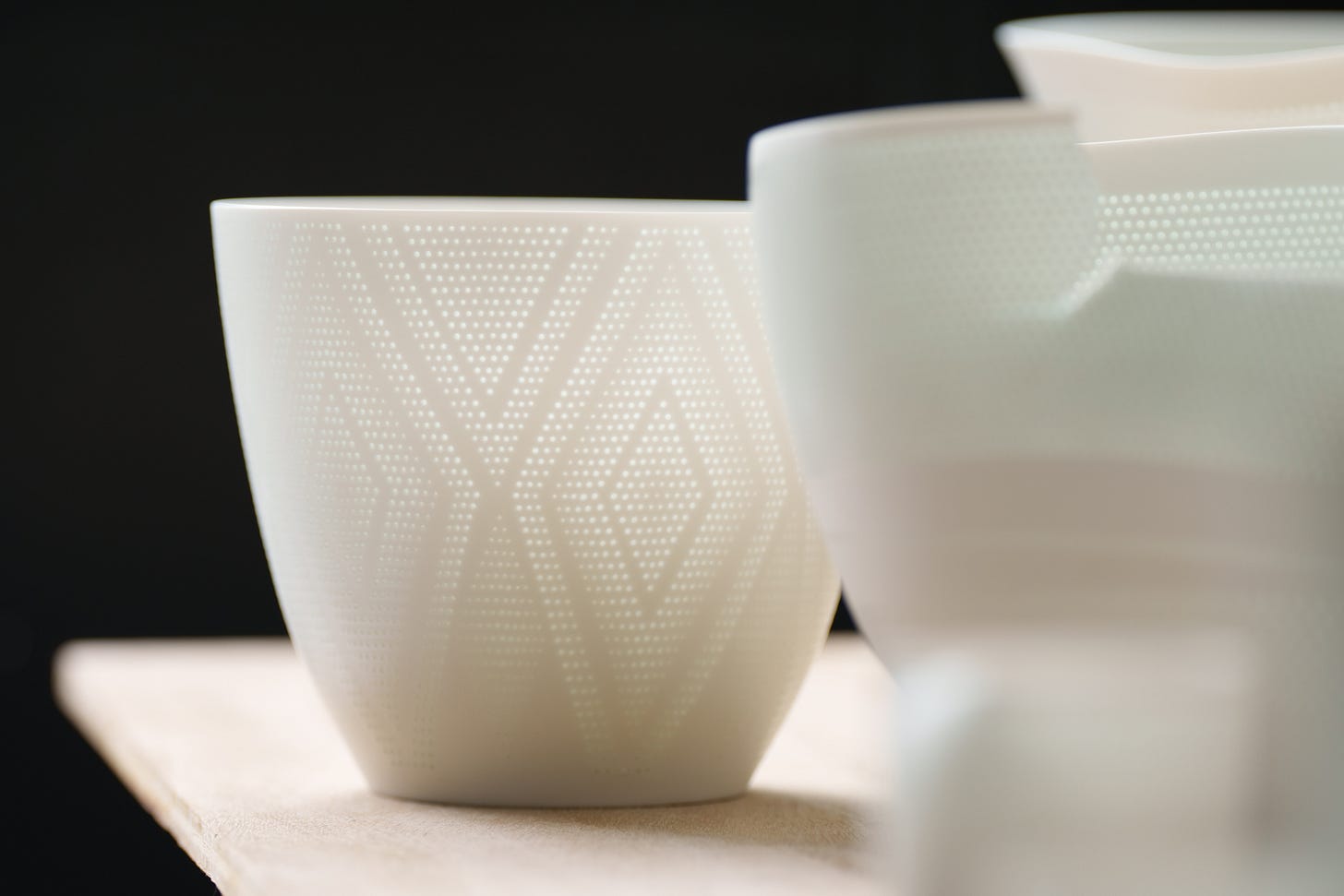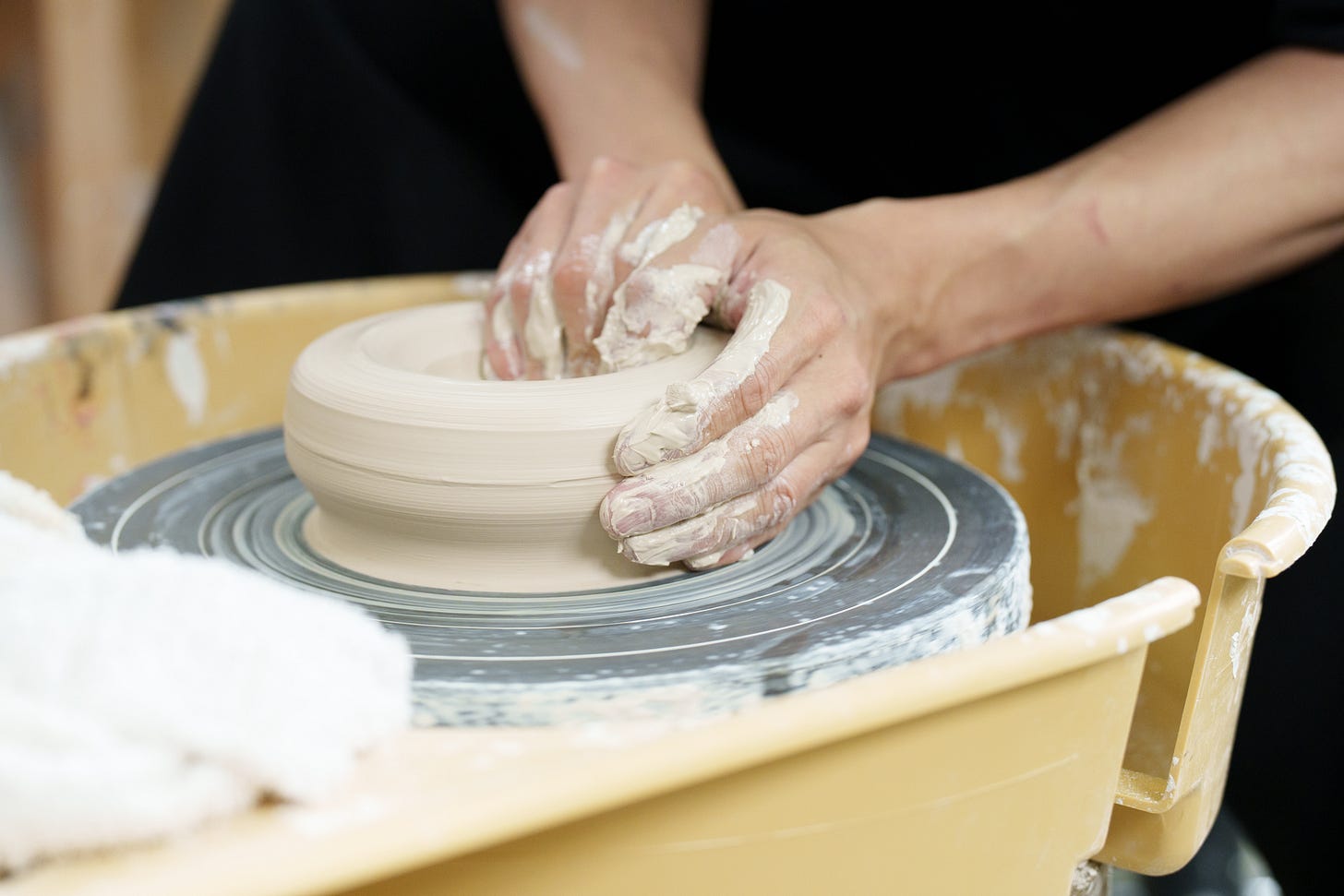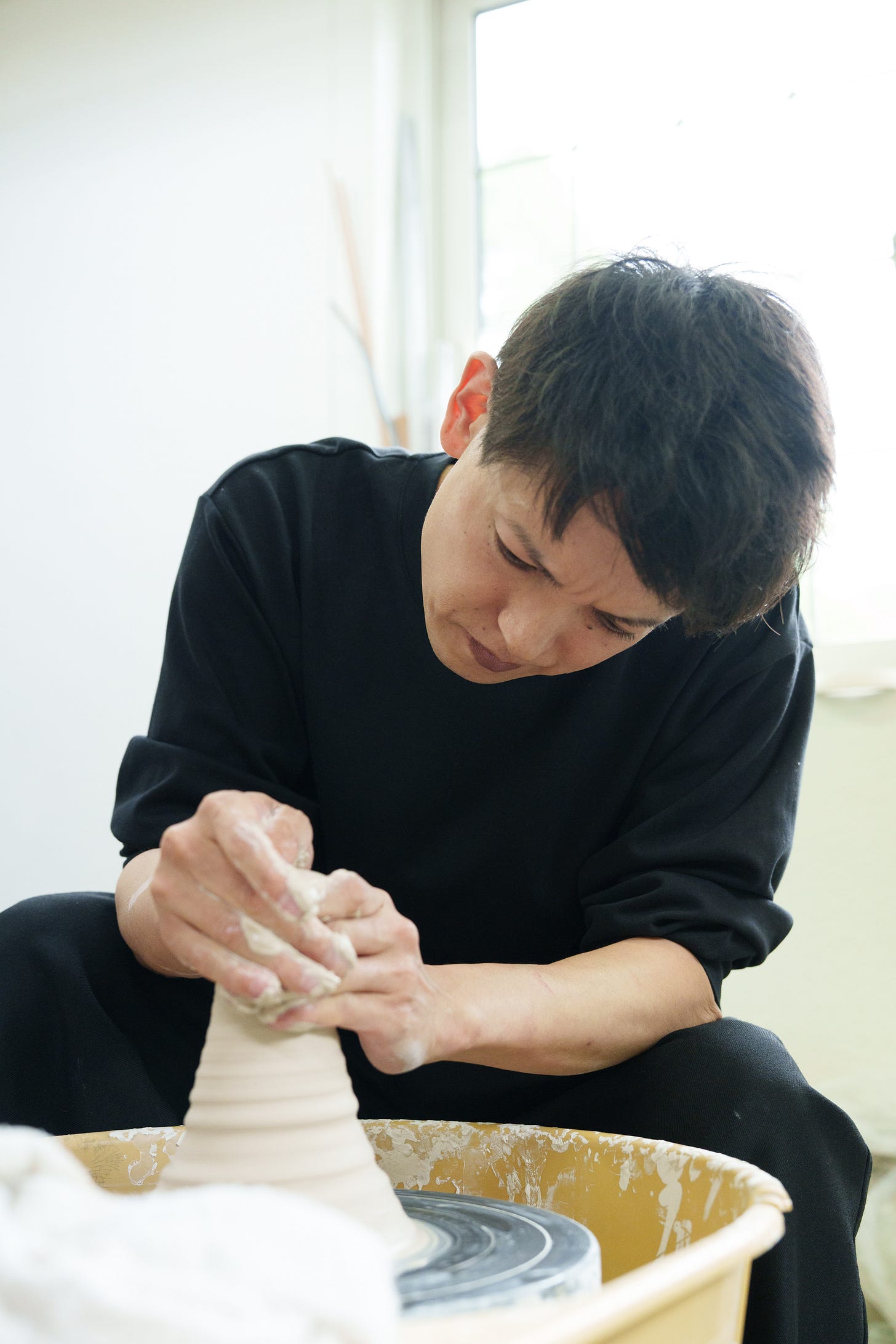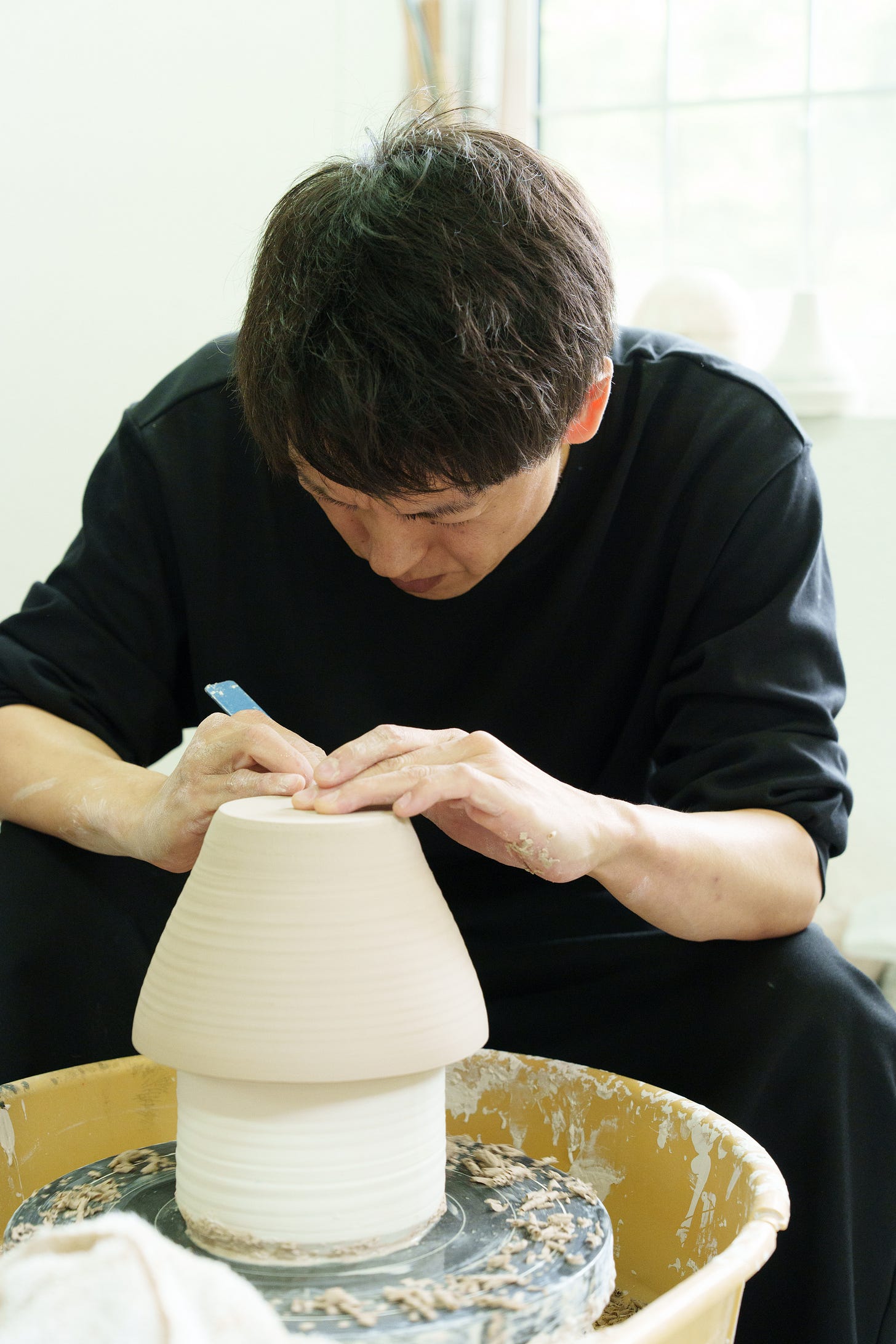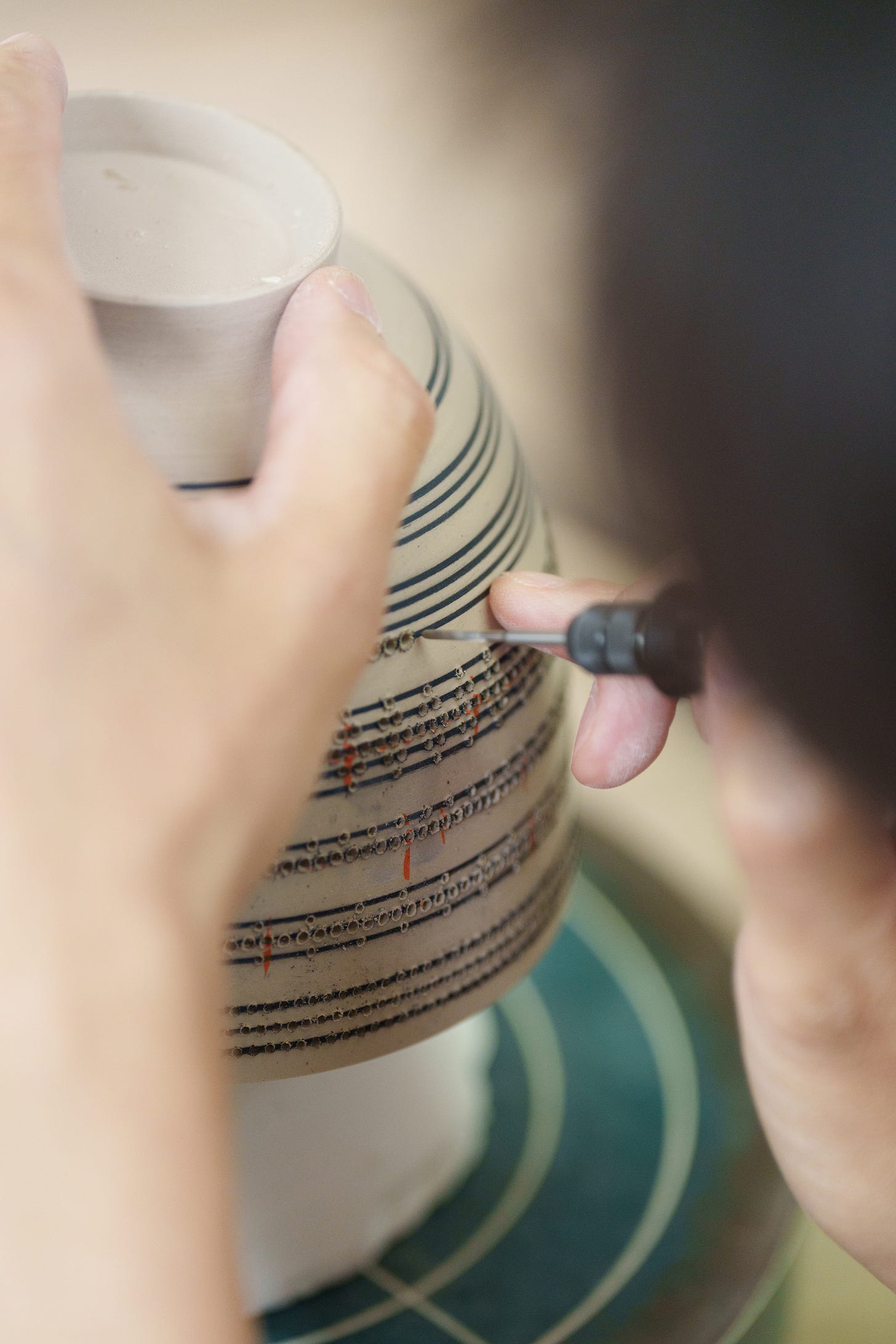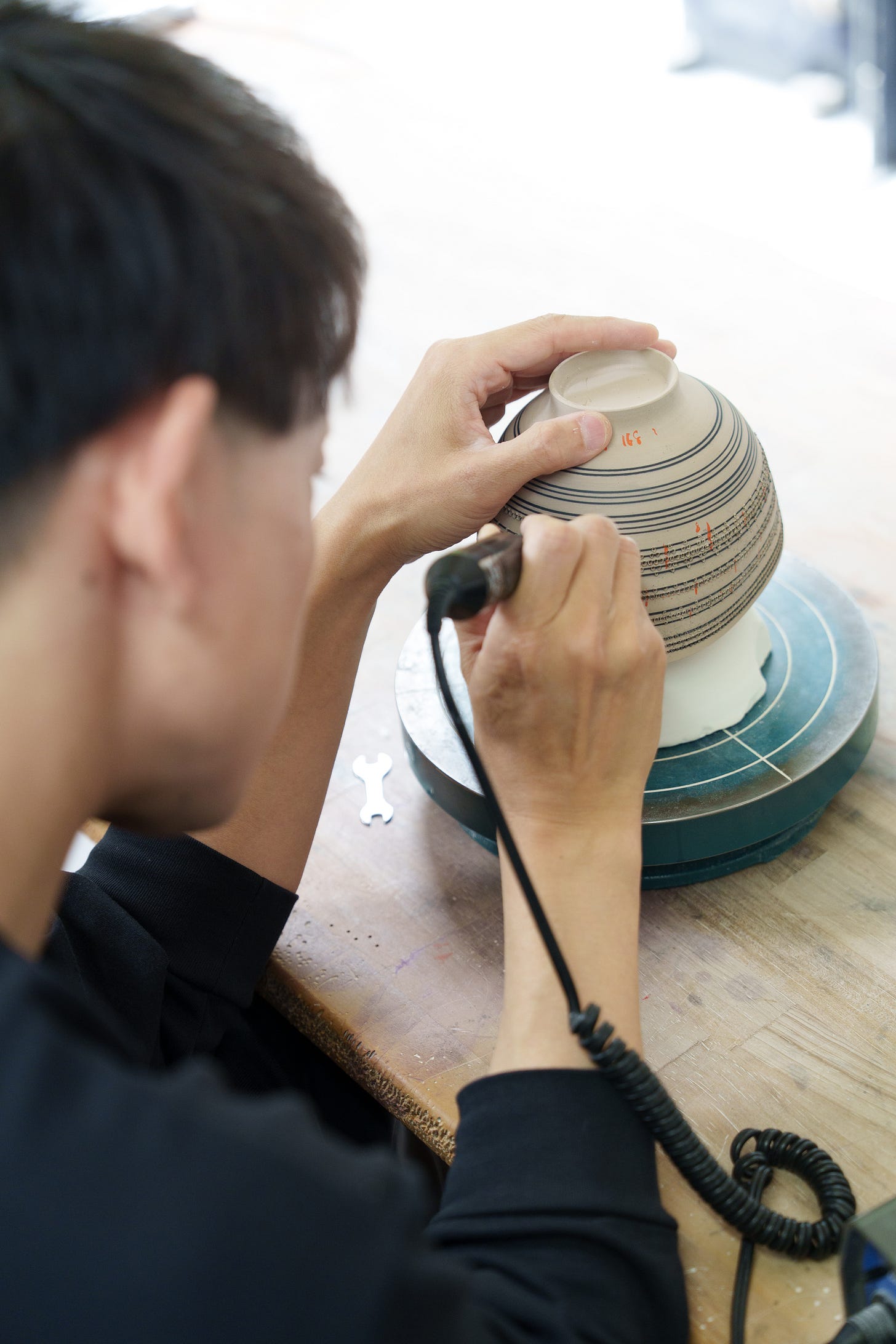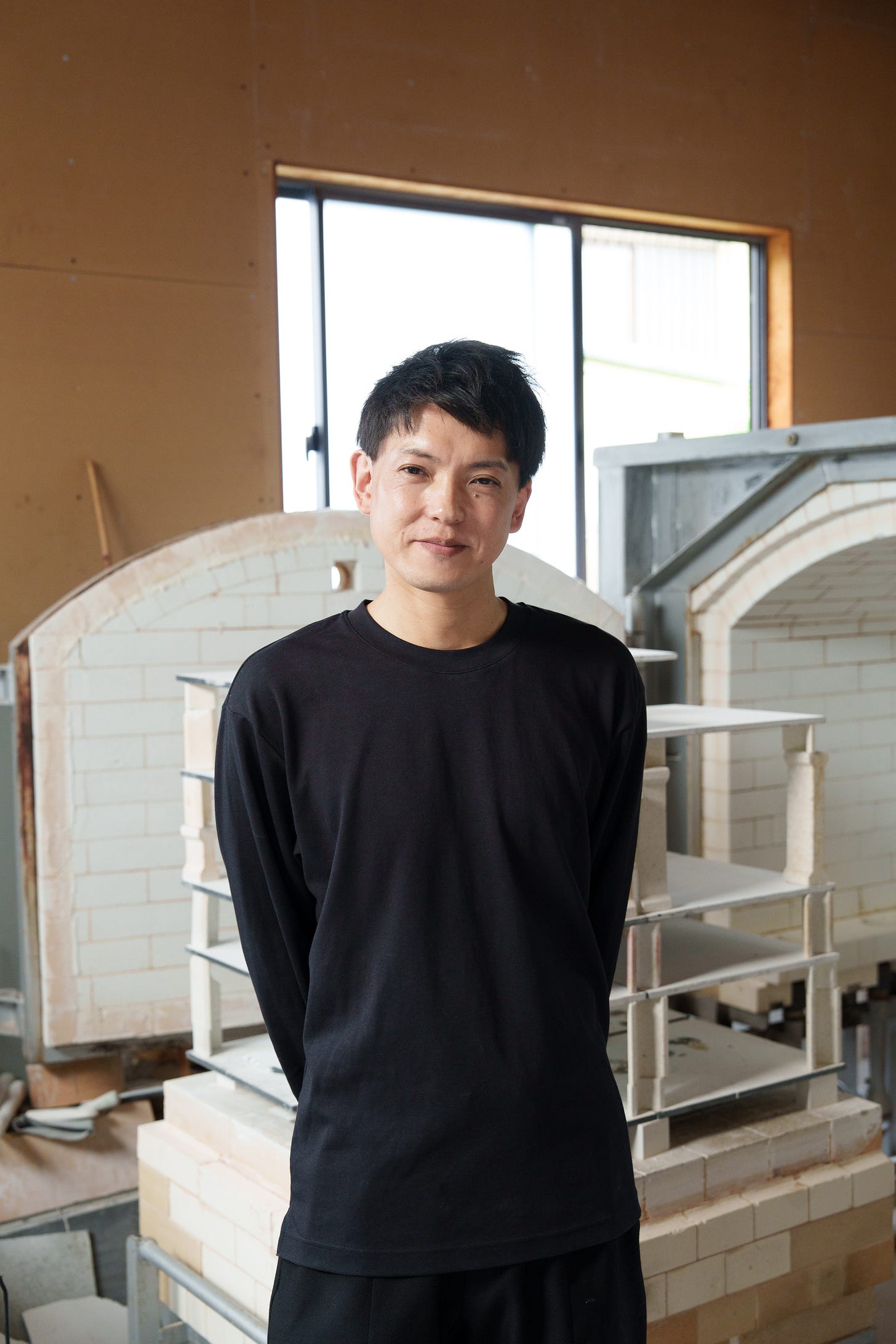MINO: THE KINGDOM OF POTTERY: Akio Niisato
Akio Niisato (b. 1977): The Art Vessel
The region of Mino, in the Gifu Prefecture of Japan, has a long, rich history dating to the 7th century A.D., gaining prominence through the production of ceramics for the tea ceremony. Today, it remains a significant center of ceramic production. Many ceramicists who work in Mino create contemporary clay art. Do not think of the traditional tea bowl, which has been the touchstone of Japanese ceramics for centuries, and still made by most artists. While contemporary artists are connected to that tradition, they have elevated the clay to new horizons.
Award-winning potter Niisato Akio (b. 1977) works in white porcelain, crafting sculptures that appear sleek and straightforward due to their whiteness and traditional forms, but are complex and sophisticated, filled with an innovative perception of the clay and narratives. Like other artists of his generation, Akio has transformed the concept of his material—white porcelain––into contemporary fine art. Whereas a porcelain vessel is traditionally meant to serve as a container, his vessels are meant to hold light. Called ‘Kouki,’ meaning ‘Vessels of Lights,’ they manifest abstract and poetic concepts. His vessels are soft, minimalist, and poetic, but it is his fascination with old Chinese porcelain that has come to shape his language.
Akio arrived in Mino to pursue a career as a professional ceramicist. After graduating from the Tajimi City Ceramics Design Center, he established his studio in the town of Toki Shi. Creating his vessels on the wheel is not the focus of his work, he says, but only the preparation, the formation of the ‘canvas,’ on which he would be creating tiny holes in pattern and rhythms. His sculptures take the form of bowls and cylinders, but they are clearly non-functional because they are pierced in latticed and geometric patterns. It is those holes which make them art sculptures, devoid of any functionality.
Precision, simplicity, perfection, and purity define Akio’s work. After shaping the vessels on the potter wheel, and achieving thin, translucent, luminous walls, it is reminiscent of traditional Chinese porcelain, renowned for its whiteness and translucence. He then drills tiny holes into the surface, one by one—each different, each crafted by his hand. After the first firing, he sands the surface to achieve a smooth surface, then fills the holes with transparent glaze in the Chinese ‘Hotarude’ technique, where porcelain is decorated with openwork. Akio’s recent sculptures are intriguing and complex. He is not only piercing the surfaces of the vessels, but also deconstructing the vessels into fragments which are then put together, resulting in architectural forms and manipulation of the surfaces. The bowl is now transformed into architecture, hovering between stability and fragmentality, demonstrating the elastic mind of the artist and his unconventional thinking.
Photography by © Takuro Kawamoto.
This visit was enabled thanks to Keiko Art International.
.





